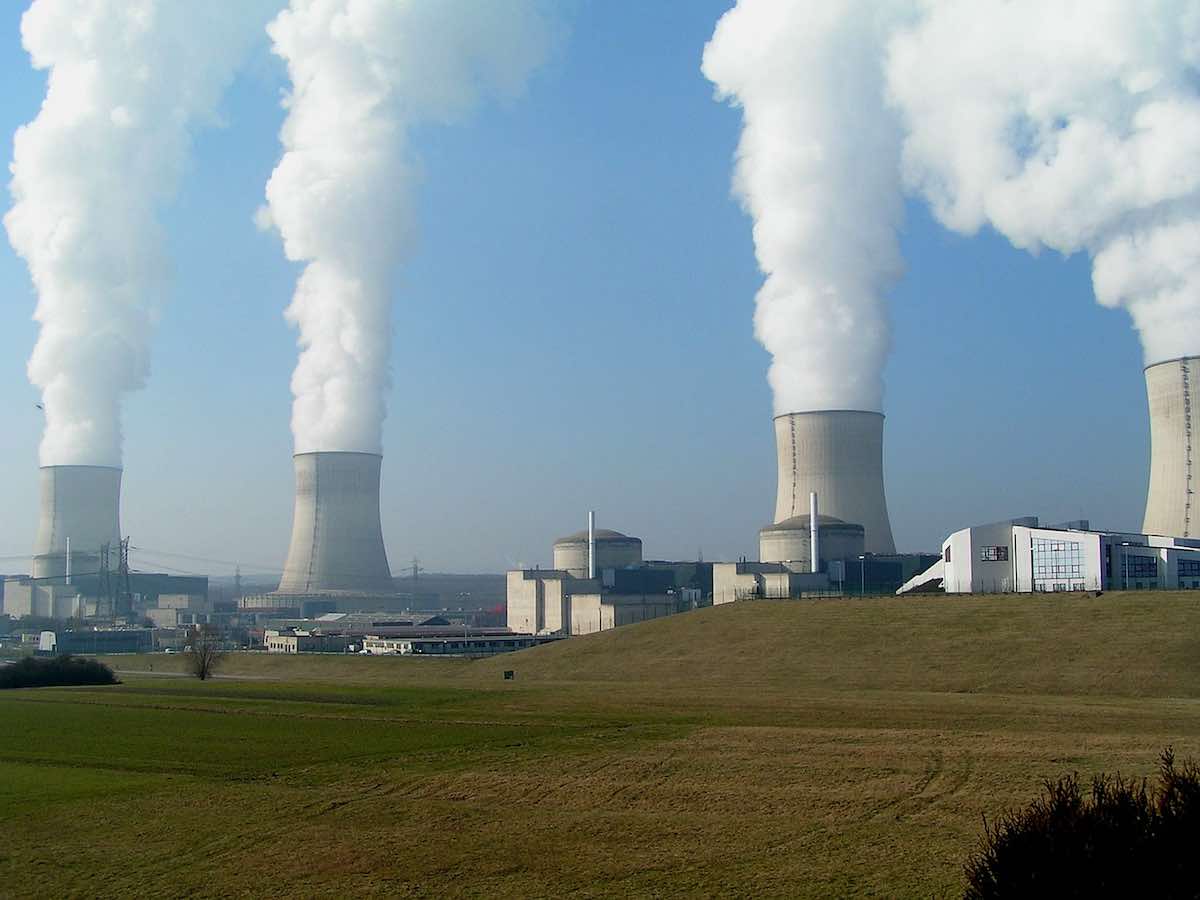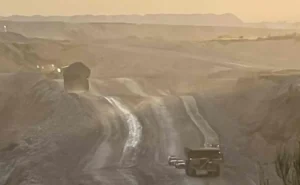As federal energy minister Chris Bowen joined the premier of New South Wales on Tuesday to announce funding to extend the benefits of solar, electrification and energy efficiency to low-income households, the state’s tabloid papers and radio shock-jocks led with a different energy news story.
“Poll reveals energy minister gets poor marks for kiboshing nuclear power as other countries vote to get a move on with the technology to cut electricity bills and emissions,” says the Daily Telegraph.
As 2BG’s Ray Hadley elaborates, the poll – conducted by the Minerals Council of New South Wales – found 67 per cent of people polled in Bowen’s electorate of McMahon are in favor of overturning Australia’s ban on nuclear power.
And according to 2GB’s Ben Fordham, that equates to 67% of voters being “in favor of using nuclear power as one of the ways to provide electricity and reduce emissions.” Fordham says the survey also shows a majority of Labor voters polled also support lifting the ban on nuclear power.
“Chris Bowen is losing support at a record pace,” Fordham says. “The energy minister is having some problems when it comes to convincing people that he’s on the right path when it comes to energy; his all or nothing push towards renewables has lost voters in his own electorate.”
Bowen has “backed himself into a corner” by labelling nuclear power as a ‘fantasy wrapped in a delusion,’ Fordham continues, before posing this apparently non-ironical question:
“So what’s more of a risk: installing small nuclear reactors, which are reliably used and can be easily installed, or building experimental projects that are still in their infancy around the world?”
The first thing to note at this point is that the Minerals Council is a staunch fossil fuel lobby group that – like the Coalition – has pivoted to cheering for nuclear power, as the coal barrow becomes increasingly difficult to push. “Anything but renewables,” as David Leitch put it last week.
The second point is that a separate survey, asking where those people polled by the Minerals Council get their information on nuclear power, might be in order. If the answer is 2GB and the Daily Tele, then the result should come as no great surprise.
But it is a concern. As Mark Diesendorf wrote here last week, the pro-nuclear power machine is well and truly off and running in Australia, embraced by the Coalition as a key policy campaign plank and spurred on by the mainstream media.
Never mind that in a decade at the helm at Canberra, successive Liberal National federal governments never themselves managed to overturn the ban on nuclear – now the task is suddenly urgent and to do anything else is political ideology.
“The pro-nuclear campaign is based on incorrect claims that opposition to nuclear energy is based on irrational fears, that nuclear energy is necessary for climate mitigation, that new nuclear energy technologies will be cheaper and safer than existing ones, and that there are allegedly no scenarios for the transition to 100 per cent renewable energy,” Diesendorf writes.
“To the contrary, critiques of nuclear power have been published by physical and social scientists and engineers. They argue that, in the real world, nuclear energy is too expensive, too dangerous (both in terms of accidents and the proliferation of nuclear weapons), and too slow to plan and build.
“These issues determine the current status of nuclear power. Nuclear power’s share of world electricity production has been declining from its peak of 17.6% in 1996 to 9.2% in 2022,” he says.
Contrary to what Fordham claims, small modular reactors are not “reliably used” anywhere in the world at the moment and are not easily installed.
As Jim Green writes here, globally “just two SMRs are said to be operating — neither meeting the ‘modular’ definition of serial factory production of reactor components. The two SMRs — one each in Russia and China — exhibit familiar problems of massive cost blowouts and multi-year delays.”
Even this former nuclear regulatory chief has been moved to question the hype around new nuclear power technologies that largely don’t exist and will likely be very costly.
But perhaps the most frustrating myth being pushed by the pro-nuclear power lobby is that it is a smarter economic and climate move for Australia than 100 per renewables; indeed, that it’s not possible to decarbonise without nuclear power.
As Diesendorf notes, there is plenty of high level and detailed modelling to suggest otherwise.
“In Australia, ClimateWorks has published two decarbonisation scenarios, spanning all economic sectors, in which electricity emissions decline to zero in 2034 and 2038 respectively. In the former scenario, net zero CO2 emissions from the whole economy are reached about 2039. More detailed scenarios of 100% renewable electricity in Australia have been published by UNSW, ANU, and AEMO.”
And then there is the weekly simulation of Australian’s main electricity grid by Windlab’s David Osmond, which – as he explained on RenewEconomy just a few months ago here – regularly demonstrate that close to 100% renewable is readily affordable and achievable.
As it happens, Osmond just this week posted the latest charts from his ongoing study, reaffirming these findings.
Thread: Each week I run a simulation of Australia’s main electricity grid using rescaled generation data to show that it can get very close to 100% renewable electricity with just 5 hrs of storage (24 GW / 120 GWh)
Results:
last week: 100% RE
last 124 weeks: 99.0% RE (1/4) pic.twitter.com/H0v9koELUJ— David Osmond (@DavidOsmond8) January 15, 2024
As he says in a thread on the social media platform X, for large parts of the year the NEM gets to 100 per cent renewables with five hours of storage, at an average cost of generation of $95/MWh.
Here is the simulation from weeks 121 to 124. It was 100% renewable.
For earlier weeks, see the following thread (2/4)https://t.co/5IlUd0cPCS pic.twitter.com/V3hYxgZd0u— David Osmond (@DavidOsmond8) January 15, 2024
Osmond says he doesn’t particularly want to enter into a renewables versus nuclear argument – he’s even working on grid simulations that factor in nuclear. But he does want to introduce some realism to the subject.
For starters, Osmond says settling on a levelised cost of energy for nuclear – at least the small modular reactor technology being called for in Australia – is pretty difficult, considering the distinct lack of real-world data.
“Because my simulation is nearly $95/megawatt-hour then nuclear really needs to get down to close to that to be competitive,” he says.
“But all the evidence [on building new plants] around the world suggests that it’s probably going to be at least double that.”
But even if SMR plants were economically competitive and ready to build now – they are neither of these things – Osmond says one of the main counter-points to the argument for nuclear power in Australia is that it’s just not what the system needs.
As he wrote here last year, the most challenging weeks for a 100 per cent renewable NEM in his simulation have been during late autumn or winter, characterised by above average demand and poor solar generation.
For those times, around 9GW of ‘other’ generation was required to firm the renewable supply during the most challenging night of the simulation. Over the two years of this simulation it would have run at a capacity factor of 3%.
“I guess the main point of my simulation is that even if we struggle to come up with long duration storage that fills that last bit, we can still get very close to 100 per cent renewables,” he tells RenewEconomy.
“One of the things I want to focus on is the fact that demand is highly variable and that we do have extreme demand during [some parts of winter] and in summer heat waves. And nuclear isn’t particularly suited to meeting those extreme demand events.
“No-one will build a nuclear plant that is only needed to meet extreme demand for just a handful of days per year, that’s what a peaking plant is for.”
Moreover, “nuclear, along with all thermal generation, tends to struggle during extreme heat waves just because of thermodynamics. They’re not as efficient and more prone to failure on hot summer days,” he says.
In other words, what’s needed to fill “that last bit” on the grid – and particularly in the middle of winter or during future extreme summer heatwaves – is, for now, existing gas, and in the near future different types of long-duration storage combined with renewable hydrogen, demand management and load shifting.
What is not needed, to use Fordham’s own words, is “experimental projects that are still in their infancy around the world.” What is not needed, is nuclear power.










